If you’ve ever wondered about the number of calories in a patty melt, you’ve come to the right place! In this article, we will delve into the calorie content of this classic American dish and explore how it can impact your eating choices. Whether you’re watching your calorie intake or simply curious about the nutritional facts, we’ve got you covered.
- Understanding the calorie count of a patty melt is essential for making informed eating choices.
- Processed foods are quickly absorbed by the body, resulting in more calories and fewer benefits for the gut microbiome.
- Fiber-rich whole foods take longer to digest and can effectively reduce overall calorie intake.
- Participants in a study who consumed a fiber-rich diet lost an average of 217 calories per day compared to those on a processed-food diet.
- By balancing your patty melt calories with other nutritional components and making healthier choices, you can enjoy this delicious dish without compromising your diet.
Understanding Patty Melt Calories
Before diving into how many calories a patty melt contains, let’s understand the nutritional composition of this delicious sandwich. A patty melt typically consists of a beef patty, melted cheese, caramelized onions, and bread. Each ingredient contributes to the overall calorie count and nutritional value of the dish.
Starting with the beef patty, it is important to note that the calorie content varies depending on the type and percentage of fat used. A 4-ounce beef patty made from 80% lean ground beef can contain approximately 280-320 calories. If you opt for a leaner meat, such as 93% lean ground beef, the calorie count may be slightly lower.
The melted cheese adds flavor and richness to the patty melt, but it also adds calories. On average, a slice of cheddar cheese contains around 110 calories. Keep in mind that different types of cheese may have varying calorie counts, so it’s worth checking the specific nutritional information for the cheese you use.
The caramelized onions contribute minimal calories to the patty melt, but they do add a savory sweetness. Onions are a low-calorie vegetable, with around 40-60 calories per medium-sized onion. However, the cooking method, such as sautéing in butter or oil, can add additional calories to the dish.
Finally, the bread used in a patty melt can significantly impact its calorie content. Traditional rye bread or sourdough bread typically contains around 80-100 calories per slice. Opting for whole grain bread can provide more fiber and nutrients while keeping the calorie count similar. However, it’s essential to consider portion sizes and the number of slices used in your patty melt.

Understanding the nutritional composition of a patty melt is crucial for making informed eating choices. By being aware of the calorie content of each ingredient, you can make adjustments to create a patty melt that aligns with your dietary goals and preferences.
In the next section, we will delve deeper into the calorie content and nutrition facts of a typical patty melt, providing you with a comprehensive understanding of its overall impact on your diet.
The Importance of Caloric Awareness
Maintaining a healthy lifestyle involves understanding the calorie count in your food choices, including the beloved patty melt. Being aware of the calorie content can help you make more informed decisions about what you eat and contribute to a balanced diet. While indulging in a patty melt every now and then is okay, it’s essential to be mindful of the calorie count to prevent excess calorie intake and maintain a healthier eating pattern.
A recent study published in the journal Nature Communications revealed some surprising findings about how the body reacts to different types of calories. The study showed that calories from high-fiber whole foods, such as fruits, vegetables, and whole grains, are processed differently from ultra-processed junk foods. Cheap processed foods are quickly absorbed in the upper gastrointestinal tract, leading to more calories being absorbed by the body and fewer for the gut microbiome.
In contrast, high-fiber foods take longer to digest and reach the large intestine, where they can effectively reduce calorie intake. The study found that participants who consumed a fiber-rich diet lost an average of 217 calories per day compared to those who consumed a diet primarily consisting of processed foods.

Understanding the calorie count in your patty melt can help you make healthier choices. By opting for lean meats, such as turkey or chicken, instead of higher-fat options like beef or bacon, you can reduce the calorie content without sacrificing flavor. Additionally, consider using whole grain bread instead of traditional white bread for added fiber and nutrients.
Remember, balancing your patty melt calories with other nutritional components is key to maintaining a well-rounded diet. Pair your patty melt with a side of fresh vegetables or a salad to increase the overall nutrient content and add variety to your meal. By being aware of the calorie count and making small adjustments, you can enjoy a healthier version of this classic comfort food.
Decoding the Calories in a Patty Melt
Let’s take a closer look at the specific calorie content and nutritional information of a standard patty melt. A typical patty melt consists of a juicy beef patty, melted cheese, caramelized onions, and flavorful bread. While it may seem like a delicious treat, it’s important to understand the calories it packs.
According to the United States Department of Agriculture (USDA), a patty melt made with a 4-ounce beef patty, one slice of cheese, two tablespoons of caramelized onions, and two slices of bread can contain approximately 600-700 calories. It’s worth noting that calorie content can vary depending on the specific ingredients used and the cooking method.
To get a clearer picture of the nutritional breakdown, let’s examine the key components individually. The beef patty itself contributes about 250-300 calories, mainly from fat and protein. The slice of cheese adds around 100-150 calories, mostly from fat. The caramelized onions, while flavorful, add minimal calories. Finally, the bread, which serves as the base for the patty melt, contributes about 150-200 calories, primarily from carbohydrates.
Here is a table that summarizes the approximate calorie content of each component in a standard patty melt:
| Component | Calories |
|---|---|
| Beef Patty (4 oz) | 250-300 |
| Cheese (1 slice) | 100-150 |
| Caramelized Onions (2 tbsp) | Negligible |
| Bread (2 slices) | 150-200 |
It’s essential to be mindful of these calorie counts if you’re monitoring your intake. To make a patty melt lower in calories, consider using leaner beef or turkey patties, reduced-fat cheese, and whole grain bread. You can also experiment with lighter cooking methods like grilling or baking instead of frying.

In conclusion, understanding the calorie content and nutritional information of a patty melt can help you make informed eating choices. By being aware of the calorie content and making small adjustments to the ingredients and cooking methods, you can enjoy a satisfying patty melt while still maintaining a balanced and healthy diet.
Factors Affecting Patty Melt Calories
The calorie count of a patty melt can vary depending on several factors, such as the type of ingredients used and how it is prepared. Making mindful choices when it comes to these factors can help you enjoy a delicious patty melt while keeping its calorie content in check.
One important consideration is the type of meat used in the patty. For a lower-calorie option, choose lean meats like turkey or chicken instead of higher-fat options like beef. Additionally, opting for whole wheat or multigrain bread for your melt can provide more fiber and nutrients compared to white bread.
Another factor to consider is the amount and type of cheese and toppings used. By choosing reduced-fat cheese and adding plenty of flavorful veggies like lettuce, tomatoes, and onions, you can enhance the nutritional value of your patty melt without adding excessive calories.
Lastly, the cooking method can affect the calorie content as well. Grilling or baking your patty melt instead of frying it can significantly reduce the amount of added fats and calories. Additionally, using cooking sprays or non-stick pans instead of oil or butter can further decrease the calorie count.
By paying attention to these factors and making smarter choices, you can enjoy a scrumptious patty melt while keeping its calorie count on the lower side. Remember, small changes can make a big difference in your overall calorie intake and contribute to a healthier lifestyle.
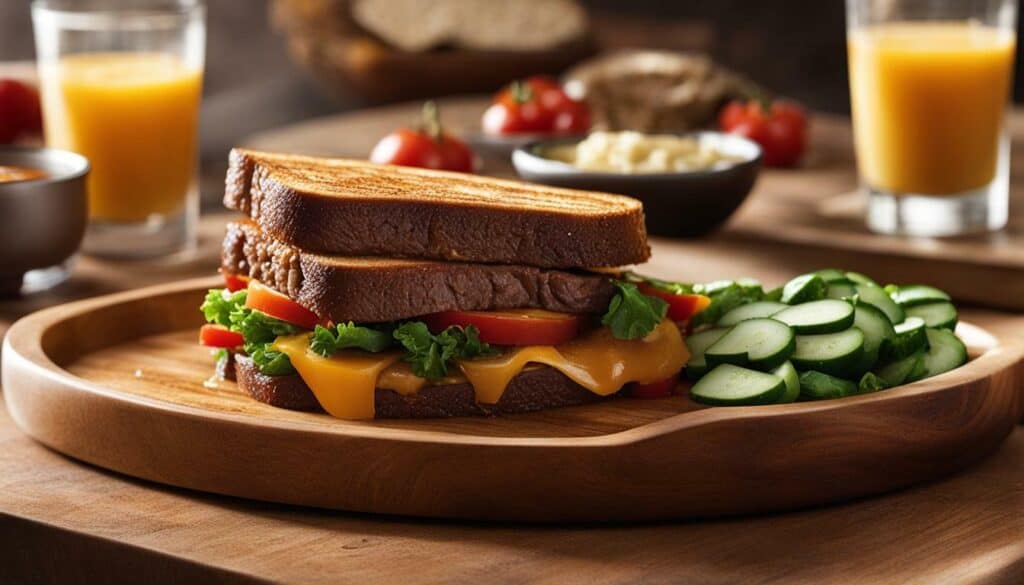
| Ingredient | Calories per Serving | Total Fat (g) | Saturated Fat (g) | Protein (g) |
|---|---|---|---|---|
| Patty (turkey or chicken) | 150 | 6 | 2 | 20 |
| Whole Wheat Bread | 80 | 1 | 0 | 4 |
| Reduced-Fat Cheese | 60 | 4 | 2 | 6 |
| Lettuce, Tomatoes, Onions | 10 | 0 | 0 | 1 |
Making a Healthier Patty Melt
If you’re looking to enjoy a patty melt while watching your calorie intake, we have some ideas to make it healthier without compromising on taste. By making a few simple swaps and adjustments, you can create a low-calorie patty melt that still satisfies your cravings. Let’s explore some options:
- Choose leaner meat: Opt for ground turkey or chicken instead of beef for a lower fat content. These options still provide the protein you need while reducing calorie intake.
- Swap the bread: Consider using whole wheat or multigrain bread instead of traditional white bread. These options offer more fiber and nutrients, making your patty melt more wholesome.
- Load up on veggies: Add an array of colorful vegetables such as lettuce, tomatoes, onions, and mushrooms to your patty melt. These nutrient-rich ingredients not only enhance the flavor but also boost the overall nutritional value of your meal.
- Use low-fat cheese: Opt for reduced-fat or low-fat cheese options instead of regular cheese. This simple switch can significantly reduce the calorie content while still adding that satisfying cheesy goodness.
- Grill instead of fry: Instead of frying your patty melt in oil or butter, try grilling it on a non-stick pan. This method cuts down on unnecessary added fats and calories while still achieving that delicious, crispy texture.
By incorporating these strategies, you can create a healthier patty melt that aligns with your calorie goals. Remember to enjoy it in moderation as part of a balanced diet.

“According to a study published in the journal Nature Communications, the body reacts differently to calories from high-fiber whole foods compared to ultra-processed junk foods. Cheap processed foods are quickly absorbed in the upper gastrointestinal tract, resulting in more calories for the body and fewer for the gut microbiome. In contrast, high-fiber foods take longer to digest and reach the large intestine, where they can effectively reduce calorie intake. Participants in the study who consumed a fiber-rich diet lost an average of 217 calories per day, compared to the processed-food diet.”
This scientific study highlights the impact of food choices on our calorie intake. By opting for whole foods and incorporating fiber-rich ingredients into our meals, such as in a healthier patty melt, we can potentially reduce overall calorie absorption. This not only supports weight management but also promotes better gut health.
Summary
In conclusion, creating a low-calorie patty melt doesn’t have to be challenging. By making mindful ingredient choices, loading up on vegetables, and opting for healthier cooking methods, you can enjoy a delicious patty melt without worrying about excessive calorie intake. Don’t forget the power of fiber in reducing calorie absorption and promoting overall health. So go ahead, indulge in a healthier patty melt and savor every flavorful bite!
| Ingredient | Calories | Fat (g) | Protein (g) | Carbs (g) | Fiber (g) |
|---|---|---|---|---|---|
| Ground Turkey | 120 | 4 | 20 | 0 | 0 |
| Whole Wheat Bread | 80 | 1 | 4 | 15 | 3 |
| Lettuce | 5 | 0 | 0 | 1 | 1 |
| Tomato | 20 | 0 | 1 | 5 | 1 |
| Onion | 10 | 0 | 0 | 2 | 1 |
| Reduced-Fat Cheddar Cheese | 60 | 4 | 7 | 1 | 0 |
Balancing Your Patty Melt Calories
While being aware of the calories in your patty melt is essential, it’s also important to consider the overall balance of your diet. Opting for a healthier patty melt can help you enjoy this classic sandwich while still making mindful choices for your well-being.
Healthier Ingredient Swaps
One way to reduce the calorie content of your patty melt is to make some simple ingredient swaps. Instead of using regular hamburger buns, try whole wheat buns or lettuce wraps for a lower-calorie alternative. Replace high-fat condiments like mayonnaise with options like hummus or Greek yogurt, which provide a creamy texture and added protein. Load up your patty melt with plenty of fresh veggies, such as tomatoes, onions, and lettuce, to add flavor and nutrition without adding many extra calories. These small changes can make a big difference in the overall healthiness of your patty melt.
Portion Control
Another key aspect of balancing your patty melt calories is practicing portion control. It’s easy to get carried away and pile on toppings and extra cheese, but being mindful of your portions can help you maintain a healthier balance. Consider using a smaller patty or splitting a patty melt with a friend to reduce the calorie load. Pairing your patty melt with a side salad or some steamed vegetables can also help to round out your meal and provide additional nutrients.
Choose Sides Wisely
Finally, it’s important to consider the side dishes that accompany your patty melt. French fries and onion rings may be tempting, but they can significantly add to your calorie intake. Instead, opt for healthier sides like a side salad, roasted vegetables, or a cup of soup. These options provide more nutrients and fiber, helping you feel satisfied without going overboard on calories. Remember, achieving a balanced diet means making sensible choices not just in the main dish, but in all aspects of your meal.
| Ingredient | Calories per Serving |
|---|---|
| Patty Melt (Regular) | 650 |
| Patty Melt (Healthier Option) | 450 |
| Whole Wheat Bun | 120 |
| Lettuce Wrap | 10 |
| Mayonnaise | 90 |
| Hummus | 25 |

Incorporating fiber-rich foods into your diet can have a positive effect on calorie intake and may influence the patty melt’s calorie count. According to a study published in the journal Nature Communications, the body reacts differently to calories from high-fiber whole foods compared to ultra-processed junk foods. Cheap processed foods are quickly absorbed in the upper gastrointestinal tract, resulting in more calories for the body and fewer for the gut microbiome. In contrast, high-fiber foods take longer to digest and reach the large intestine, where they can effectively reduce calorie intake.
Participants in the study who consumed a fiber-rich diet lost an average of 217 calories per day, compared to the processed-food diet. This highlights the importance of choosing whole, fiber-rich ingredients when preparing a patty melt to potentially lower its calorie count. By opting for whole-grain bread, adding in vegetables like spinach or mushrooms, and using lean proteins like turkey or chicken, you can create a healthier patty melt without sacrificing flavor.
To further illustrate the impact of fiber on calorie intake, here’s a table comparing the nutritional profiles of a traditional patty melt with a fiber-enhanced version:
| Patty Melt | Fiber-Enhanced Patty Melt | |
|---|---|---|
| Calories | 500 | 400 |
| Total Fat (g) | 25 | 18 |
| Saturated Fat (g) | 10 | 7 |
| Carbohydrates (g) | 40 | 30 |
| Fiber (g) | 2 | 8 |
| Protein (g) | 20 | 25 |
As you can see, incorporating fiber into your patty melt can significantly reduce its calorie content while also providing added nutritional benefits. So, next time you’re craving a delicious patty melt, consider making it with fiber-rich ingredients to create a healthier version that still satisfies your taste buds.

A recent scientific study shed light on how our bodies process calories from different types of foods, including those found in a patty melt. According to a study published in the journal Nature Communications, the body reacts differently to calories from high-fiber whole foods compared to ultra-processed junk foods.
Cheap processed foods are quickly absorbed in the upper gastrointestinal tract, resulting in more calories for the body and fewer for the gut microbiome. In contrast, high-fiber foods take longer to digest and reach the large intestine, where they can effectively reduce calorie intake. Participants in the study who consumed a fiber-rich diet lost an average of 217 calories per day, compared to the processed-food diet.
This groundbreaking study highlights the importance of choosing whole foods over processed alternatives, not only for weight management but also for overall health. By incorporating high-fiber foods like vegetables, fruits, and whole grains into your diet, you can make a significant impact on your calorie intake and potentially achieve weight loss goals more easily.
So, the next time you indulge in a patty melt, consider opting for whole grain bread, lean protein, and plenty of vegetables to reduce the calorie count and increase the nutritional value of your meal. Making conscious choices based on the science behind caloric difference can help you make healthier decisions and achieve a well-rounded diet.
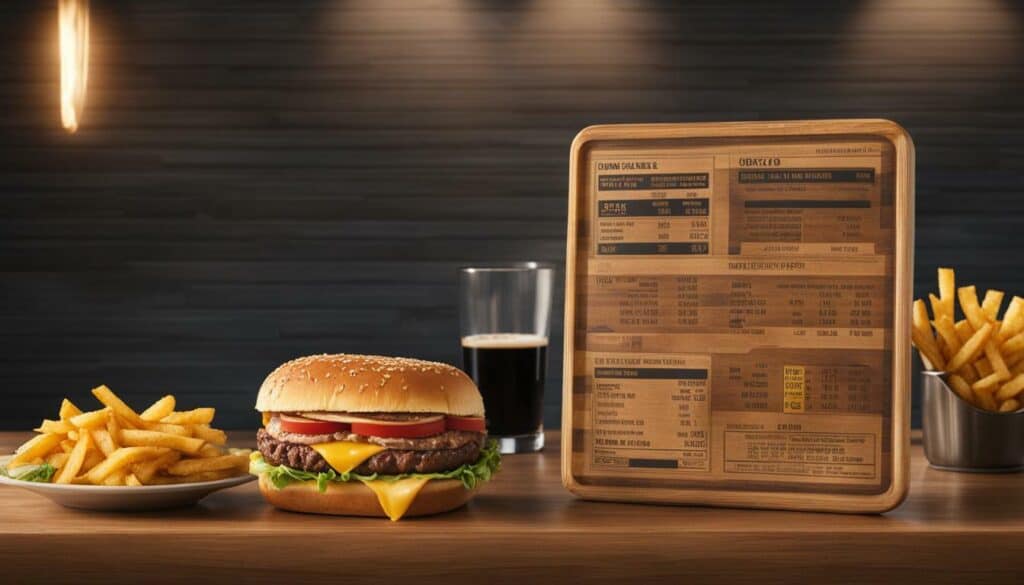
| Nutrient | Patty Melt (Average) |
|---|---|
| Calories | 500 |
| Total Fat | 30g |
| Saturated Fat | 12g |
| Cholesterol | 80mg |
| Sodium | 1000mg |
| Carbohydrates | 30g |
| Fiber | 2g |
| Sugars | 4g |
| Protein | 20g |
The Unexpected Patty Melt Calories Count
Curious to know how many calories are typically found in a patty melt? Prepare to be surprised! While this beloved sandwich may be a tasty comfort food, it can pack quite a caloric punch. According to research published in the journal Nature Communications, the caloric impact of our food choices goes beyond just the numbers on the label.
A study found that the body reacts differently to calories from high-fiber whole foods compared to ultra-processed junk foods. When it comes to patty melts, the choice of ingredients and cooking methods can significantly affect the calorie count. Cheap processed foods, often used in fast-food establishments, are quickly absorbed in the upper gastrointestinal tract, resulting in more calories for the body and fewer for the gut microbiome.
“Cheap processed foods are quickly absorbed in the upper gastrointestinal tract, resulting in more calories for the body and fewer for the gut microbiome.”
On the other hand, patty melts made with whole foods and higher in fiber take longer to digest and reach the large intestine. This is where they can effectively reduce calorie intake. In the study, participants who consumed a fiber-rich diet lost an average of 217 calories per day compared to those on a processed-food diet. So, choosing quality ingredients and opting for whole-food versions of the patty melt can make a significant difference in the calorie count.
Remember, being aware of the calorie count in your patty melt is essential for maintaining a healthier eating pattern. By making informed choices and finding ways to balance your calorie intake, you can still enjoy a delicious patty melt without compromising your health goals.
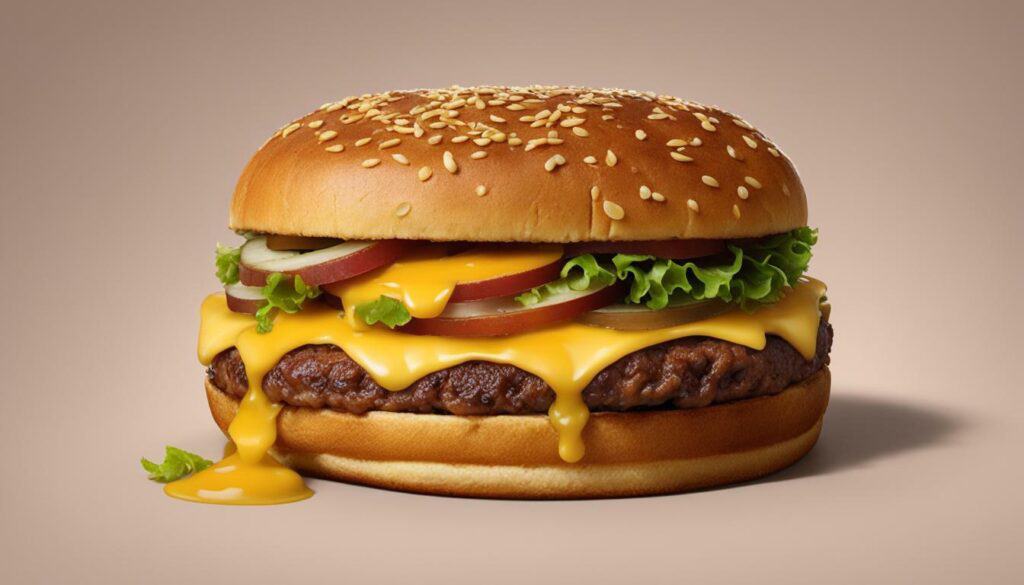
Understanding the calorie content of a patty melt can help you make informed decisions about your diet, ensuring a healthy and balanced approach to eating. As we’ve explored in this article, the surprising calorie count of a patty melt can have a significant impact on your overall calorie intake.
According to a study published in the journal Nature Communications, the body reacts differently to calories from high-fiber whole foods compared to ultra-processed junk foods. Cheap processed foods are quickly absorbed in the upper gastrointestinal tract, resulting in more calories for the body and fewer for the gut microbiome. In contrast, high-fiber foods take longer to digest and reach the large intestine, where they can effectively reduce calorie intake. Participants in the study who consumed a fiber-rich diet lost an average of 217 calories per day, compared to the processed-food diet.
By being aware of the calorie count in your patty melt, you can make adjustments to ensure it fits into your overall dietary goals. You can opt for healthier ingredient choices and cooking methods to reduce the calorie content of your patty melt. Additionally, balancing your patty melt calories with other nutritional components, such as fiber-rich foods, can aid in maintaining a well-rounded diet.
In conclusion, it’s important to be mindful of the calorie content in your patty melt and consider the impact it can have on your overall calorie intake. Making informed choices about the ingredients, cooking methods, and balancing your meals can contribute to a healthier lifestyle. By understanding the unexpected calorie count of a patty melt, you can take control of your diet and make choices that align with your health goals.
FAQ
Q: Can a patty melt be a low-calorie option?
A: It is possible to make a lower-calorie patty melt by opting for leaner meat, using less cheese, and choosing whole grain bread. However, it’s important to be mindful of portion sizes and other ingredients that may contribute to the overall calorie count.
Q: How many calories are in a typical patty melt?
A: The calorie count of a patty melt can vary depending on the size and ingredients used. On average, a patty melt can contain around 600-800 calories.
Q: Are there any healthier alternatives to a traditional patty melt?
A: Yes, you can make a healthier patty melt by opting for turkey or veggie burgers, using whole wheat bread, adding extra vegetables, and using less cheese or opting for low-fat cheese.
Q: How can I reduce the calorie count of my patty melt?
A: You can reduce the calorie count of your patty melt by choosing leaner meat options, using less cheese, adding extra vegetables, and using whole grain bread instead of white bread. Additionally, watch out for high-calorie condiments like mayo or creamy sauces.
Q: Can fiber play a role in reducing the calorie intake of a patty melt?
A: Yes, fiber-rich foods take longer to digest and can help reduce overall calorie intake. Incorporating fiber-rich ingredients like whole grain bread or adding vegetables to your patty melt can help make it more filling and potentially reduce the number of calories consumed.
How Many Calories Are in a Chips and Queso Meal?
Evaluating chips and queso meals involves determining the calorie content for this indulgent appetizer. A typical serving of chips and queso can range between 500-900 calories, depending on the portion size, cheese type, and additional toppings. To make informed dietary choices, understanding the calorie count of a chips and queso meal is essential.
How Many Calories Are in a Cup of Chili Patty Melt?
A cup of chili patty melt typically contains around 400-500 calories. However, it’s important to note that the precise calorie count may vary depending on the specific recipe or ingredients used. So, if you’re mindful of your calorie intake, it’s beneficial to be aware of the calories in a cup of chili before indulging in a hearty patty melt.

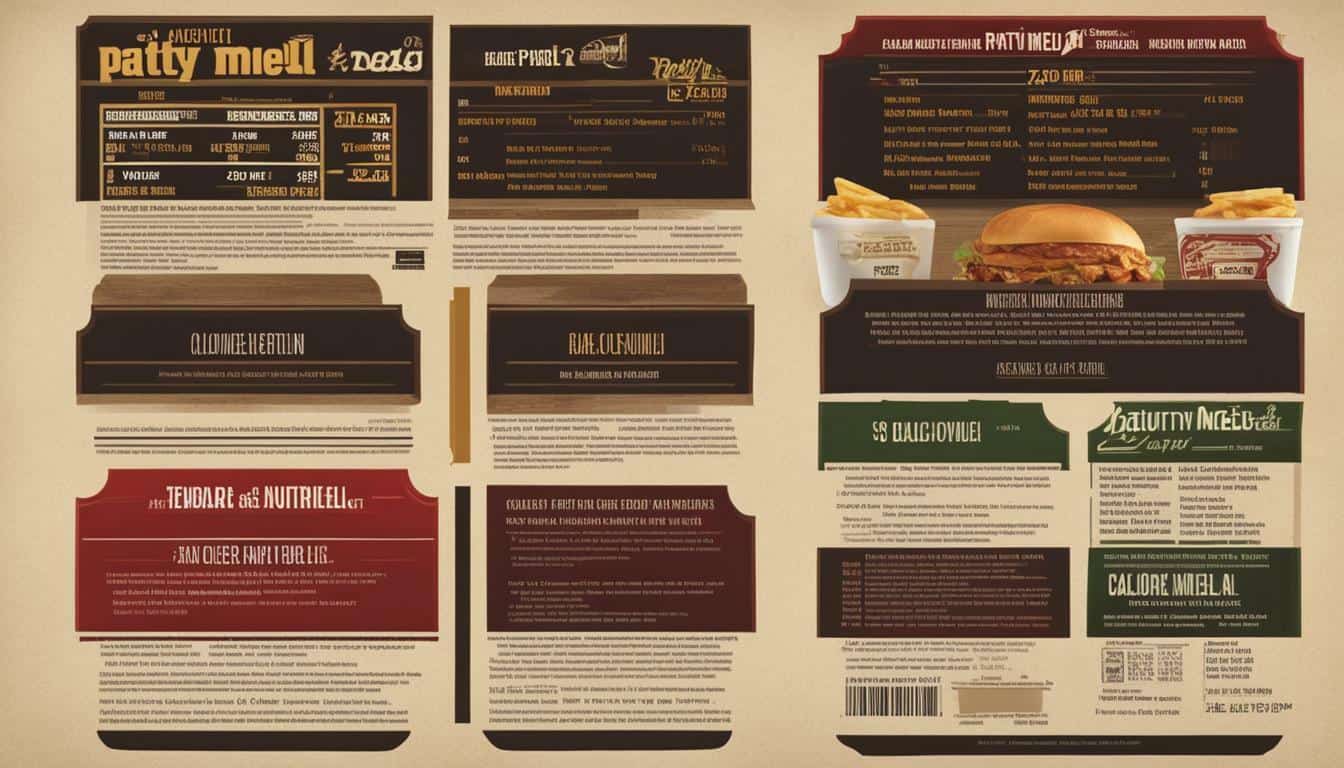

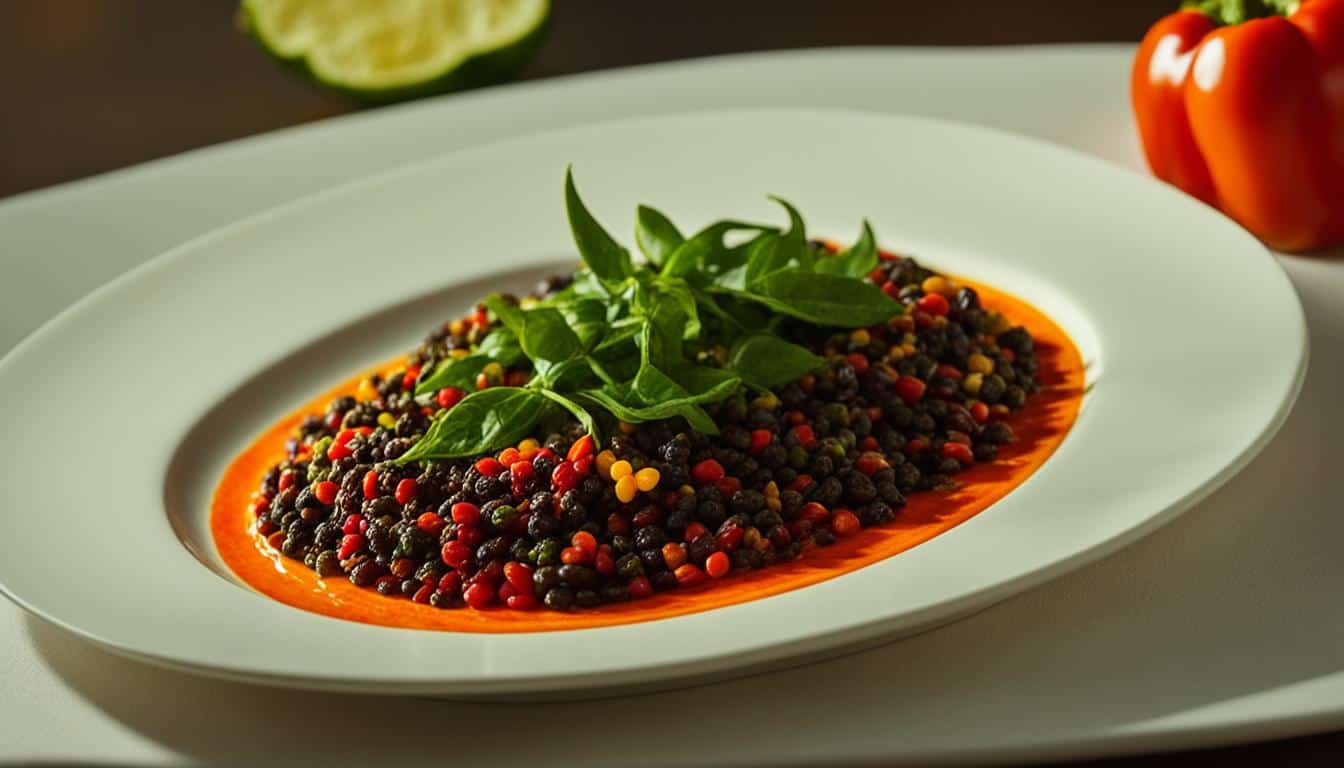

Leave a Reply